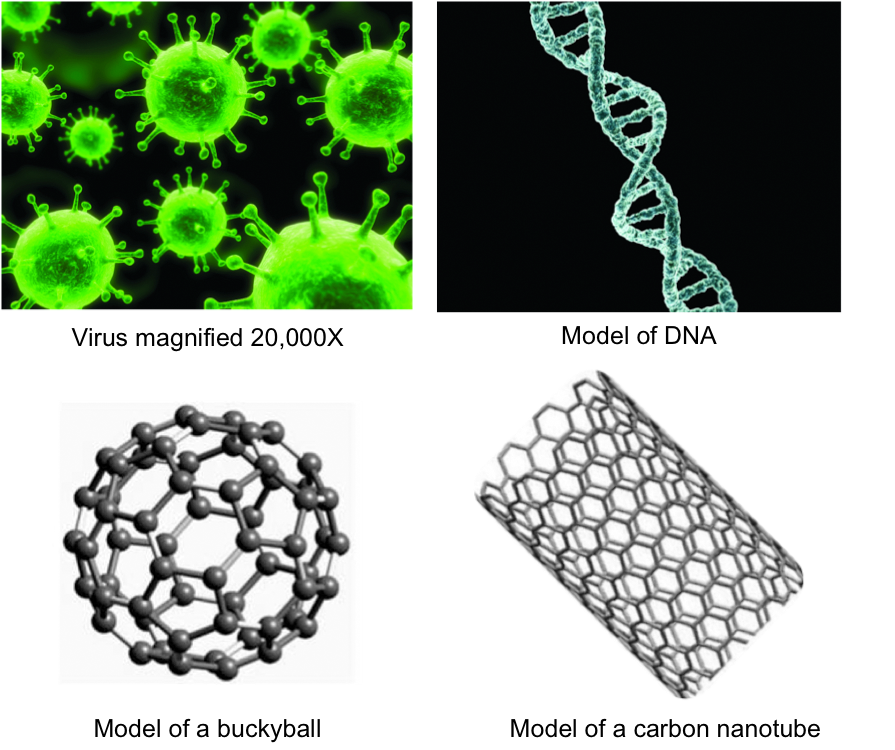 >
Are nanomaterials per se toxic or dangerous?
>
Are nanomaterials per se toxic or dangerous?
Are nanomaterials per se toxic or dangerous?
No, they are not. The size of a material alone does not determine its toxicity. Most substances exerting hazardous effects in the nano-size show the same toxic effects for larger sizes / bulk material. However, the exposure and distribution within organisms may differ, e.g. nanomaterials can reach deeper regions of the lung upon inhalation whereas this is not possible for larger particles.
Are nanomaterials more dangerous compared to micro- and larger particles?
Nanomaterials have unique properties, which make them so interesting for many novel applications. At the same time, concerns arose, whether these new properties lead to unexpected hazard towards humans and the environment. Many research activities were performed to tackle this question. So far, no unique mechanisms of hazard exclusively occurring for nanomaterials were discovered. The toxicity of a substance is rather determined by the type of material than by its size.
How big is a nanometer?

Size comparison Virus DNA Fullerene CNT
The term „nano“ derives from the greek word nanos, dwarf. A nanometer is one millionth of a milimeter. It is equal to 1/1,000,000,000th or one-billionth of a meter. When things are this small, you can’t see them with your eyes, or a light microscope. Objects this small require a special tool called electron microscope (EM) or scanning probe microscope (SEM).
Nanoparticles range in size from 1 nm to 100 nm.
All these naturally and synthetic things are on the nanometer scale: Virus (30-50 nm), DNA (2.5 nm), buckyballs (~1 nm in diameter), CNT (~1 nm in diameter).
What is a nanomaterial?
UPDATE!
In 2011, the European Commission published a first common definition of the term “nanomaterial” (2011/696/EU). This was updated in 2022:
‘Nanomaterial’ means a natural, incidental or manufactured material consisting of solid particles that are present, either on their own or as identifiable constituent particles in aggregates or agglomerates, and where 50% or more of these particles in the number-based size distribution fulfil at least one of the following conditions:
- one or more external dimensions of the particle are in the size range 1 nm to 100 nm;
- the particle has an elongated shape, such as a rod, fibre or tube, where two external dimensions are smaller than 1 nm and the other dimension is larger than 100 nm;
- the particle has a plate-like shape, where one external dimension is smaller than 1 nm and the other dimensions are larger than 100 nm.
- In the determination of the particle number-based size distribution, particles with at least two orthogonal external dimensions larger than 100 μm need not be considered.
However, a material with a specific surface area by volume of < 6 m2/cm3 shall not be considered a nanomaterial.
https://ec.europa.eu/environment/chemicals/nanotech/pdf/C_2022_3689_1_EN_ACT_part1_v6.pdf
What are nanoparticles?
A material is called a nano-object when one, two or three external dimensions of it are present in nanoscale. This includes nanoparticles, i.e. nano-objects with all three external dimensions on the nanoscale. Nano-platelets are nano-objects with one external dimension on the nanoscale, and two much larger external dimensions. Nanofibers have two similar external dimensions on the nanoscale, and a third external dimension that is much larger than the other two dimensions.
These definitions were developed in 2008 by the Technical Committee ISO/TC 229 “Nanotechnologies” in collaboration with the Technical Committee CEN/TC 352 “Nanotechnologies”.
Nanoparticles can be of different chemical nature. Both inorganic and organic nanoparticles are known. They can consist of only one element, i.e. metal or carbon or of compounds like oxides, nitrides, etc. Nanocomposites are understood to be composite materials that have at least one component in the form of a nano-object. Nanoparticles often build clusters of aggregates or agglomerates. By contrast to aggregates, agglomerates can be ground into the primary grains through optimal mixing. Therefore, their shape can be very inconsistent and they may take a wide variety of forms which has considerable influence on their properties. In principle, because of their enormous surface-to-mass ratio nanoparticles behave completely different than larger composites.